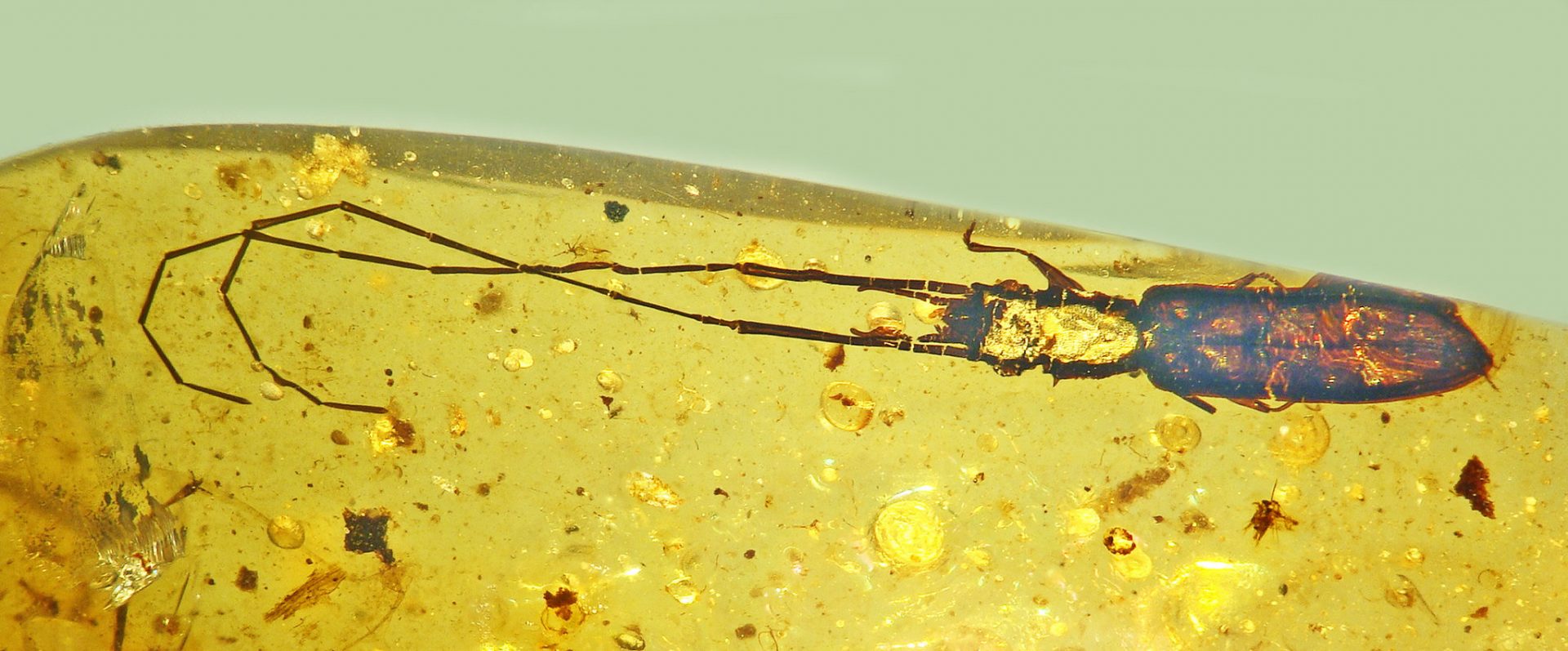Travel back in time to a world where dinosaurs roamed and beetles battled for love. While iguanodons and triceratops fled from hungry tyrannosaurs, male beetles engaged in combat using their supersized antennae to win over mates.
Researchers have made an exciting discovery in Burmese amber – a new species of beetle with antennae nearly 8 millimeters long attached to a 2.3-millimeter body.
Named Protoliota paleus, this silvan flat bark beetle showcases unique characteristics such as its small body size, weakly protruding eyes, long mandibles, and narrow pronotum. The pronotum, a plate-like structure covering part of the thorax, is where the legs and wings attach.
George Poinar Jr., an expert in studying ancient life forms preserved in amber, explains, “We also see evidence of sexual secretions on tarsal hairs on the fossil beetle, similar to those that attract females on today’s silvanid beetles. So we have a scenario of a combative male beetle that chased females under the feet of dinosaurs. David Attenborough shows similar male beetles fighting over females in tropical forests today.”
While having long antennae may have its drawbacks, such as hindering movement and getting tangled in vegetation, these extended antennae are advantageous for finding mates and engaging in battles with other males. Poinar adds, “Longer antennae mean a wider reach, increasing the likelihood of encountering a female. And of course, the longer the antennae, the bigger the weapons the beetle has at its disposal for combat with other males.”
Interestingly, there is no evidence that female beetles choose mates based on antennae length. Poinar suggests that the setal sex patches on the beetle’s foretarsi likely produced pheromones that attracted females. Additionally, the long antennae may have been used to shield the female during egg laying.
The silvan flat bark beetle belongs to the Silvanidae family, which consists of 62 described genera and about 500 described species. These beetles can be found on all continents except Antarctica. Most silvan beetles are saprophylic, living under the bark of dying or dead trees and feeding on fungi. However, some species, like the sawtoothed grain beetle and the merchant grain beetle, are pests that infest stored products.








